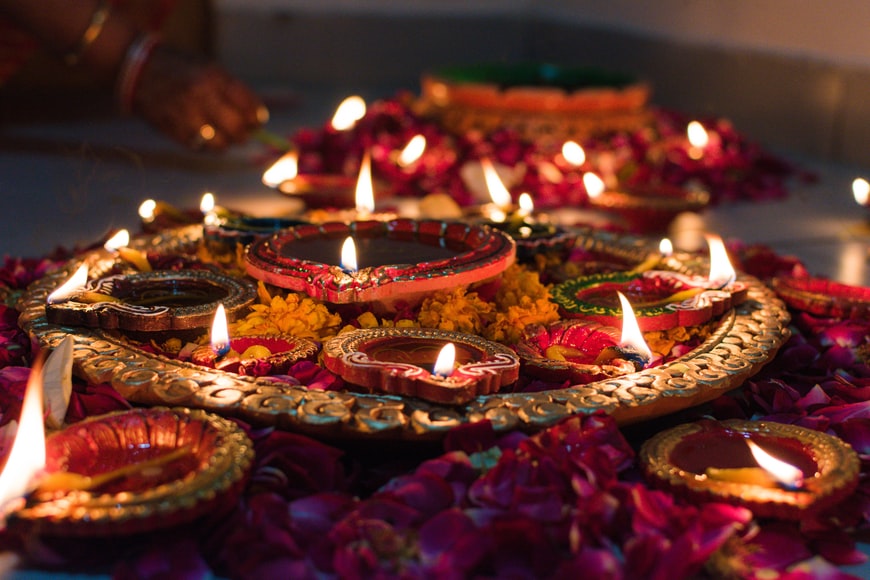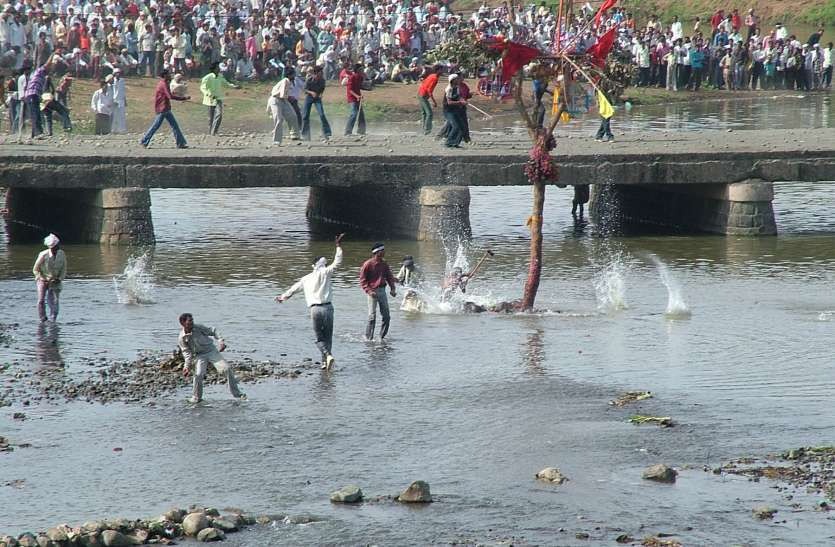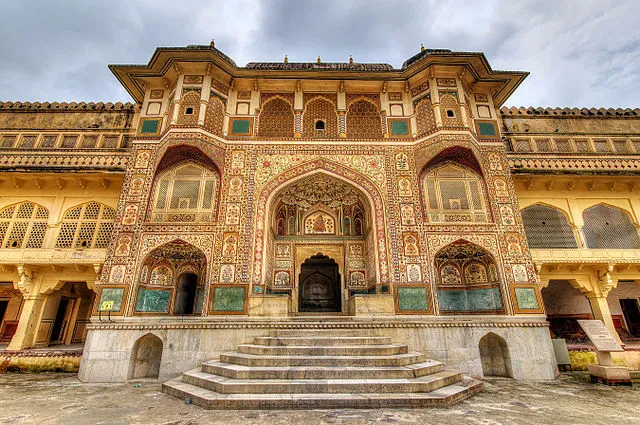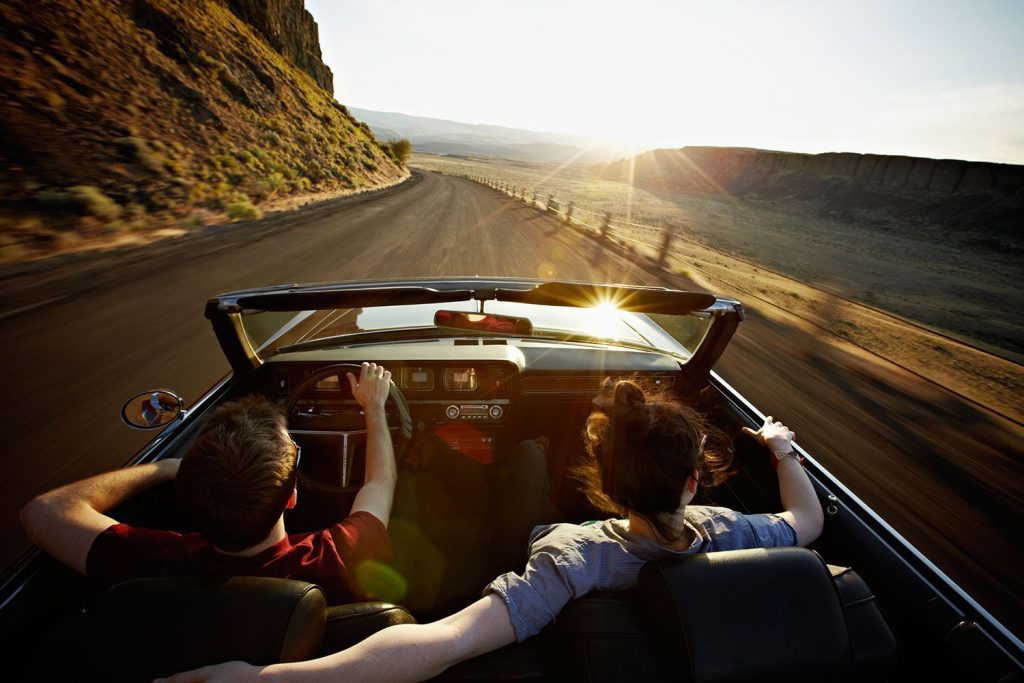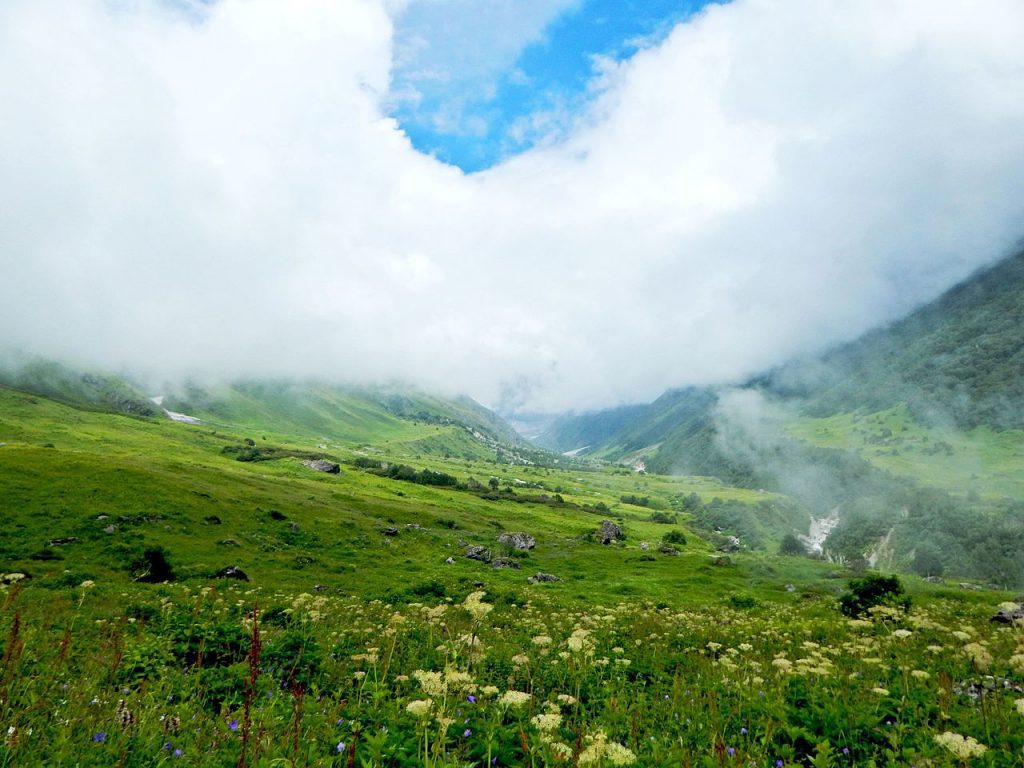The Festival of Lights, Diwali, is celebrated with grandeur throughout India. It’s that time of year when every road and window twinkles, displaying the glory of Diwali to the rest of the world. Homes eliminate darkness by sharing the illumination of lanterns, earthen lamps, and fairy lights. Since India is a melting pot of cultures with a diverse set of beliefs and heritage, each region has unique Diwali rituals.
This day is mostly celebrated in northern India as the day Lord Rama, his wife Sita, brother Lakshman, and Hanuman returned to Ayodhya after slaying Ravana. Since the night they returned was Amavasya, a moonless night, people light clay pots called diyas on Diwali night. South Indians, on the other hand, commemorate the festival as the day Lord Krishna destroyed the demon Narakasura. It is also believed that Lord Vishnu and Goddess Lakshmi married on this day. Diwali for the year 2024 is observed from Thu, 31 Oct, 2024 – Sat, 2 Nov, 2024.
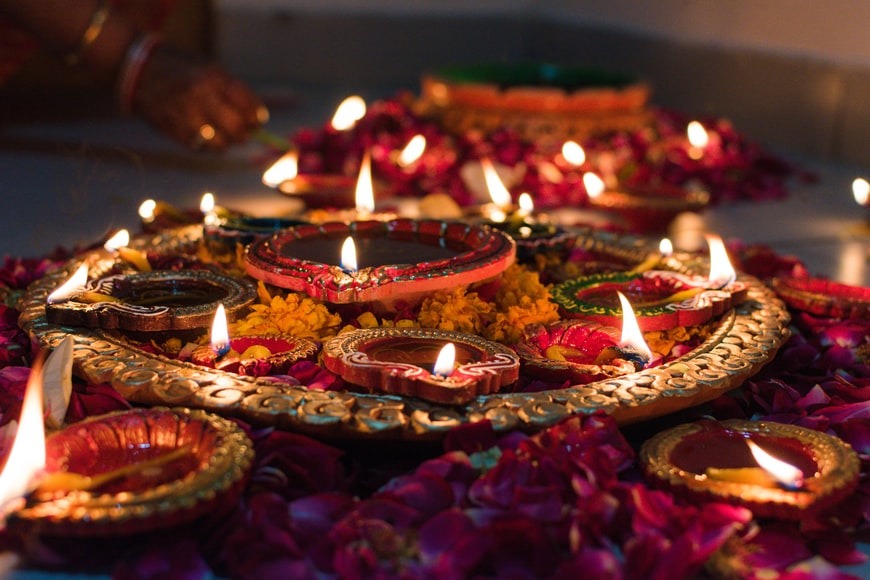
Diwali traditions and festivities differ from state to state. However, the essence of celebrating all positive things in life remains the same. Learn about the unique Diwali rituals performed by different communities in India.
1. Celebrating Guru Nanak’s return to Punjab
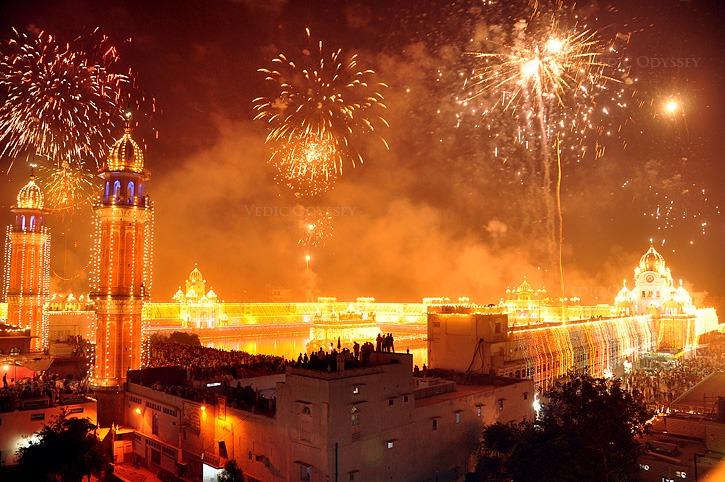
For Sikhs, the narrative of Diwali is a tale of the Sikh battle for freedom. Emperor Jahangir imprisoned the sixth Guru Nanak out of fear of the Guru’s rising popularity and influence. The Sikh festival of Bandi Chhor Diwas commemorates his release from the Gwalior Fort, which coincides with the Hindu festival of Diwali. Bandi Chhor Diwas is celebrated by the lighting of diyas in houses and gurudwaras, as well as bursting crackers, gifting and feasting. If you plan to attend the vibrant celebrations of Bandi Chhor Diwas here, book a convenient car rental in Amritsar with a local driver.
[Also Read: Explore Amritsar – The City of Golden Temple]
2. Worshipping goddess Kali in East India

Kali Puja is a prominent Hindu festival honouring Goddess Kali. While most places in India worship Goddess Lakshmi on Diwali’s Amavasya Tithi, eastern India, particularly West Bengal, Odisha, and Assam, honours Goddess Kali on the new moon in Kartik. Kali Puja, also known as Shyama Puja, is the second most popular festival in Eastern India after Durga Puja.
Kali Puja is performed to seek the goddess for guidance in overcoming evil and to obtain her blessings for happiness, health, wealth, and serenity. The rituals are performed at night and devotees carry out the puja with red hibiscus flowers, which are believed to be her favourite. Fish is one of the most essential foods she is given, along with rice, lentils, and sweets.

Puja by Agambagish is a form of Kali Puja performed in West Bengal. Agambagish, Maa Kali’s most respected tantriks or priests, meditate in mortuaries, sitting in a circle surrounded by human skulls that they gather and smear with their blood. Agambagish rituals can be witnessed in rural West Bengal, primarily in the districts of Howrah, Midnapore, and Hoogly.
3. Flinging firecrackers at each other in Gujarat

Did you know that people in Gujarat’s Panchmahal shower each other with firework blazes? People fling blazing firecrackers at one another in what is considered to be one of the age-old unique Diwali rituals of Vejalpur village in Panchmahal.
In some households in Gujarat during Diwali, a ghee-lit diya is left to burn all night. The leftovers from the diyas are utilised the next morning to produce kajal, which is to be applied by women to their eyes. This is believed to be a very auspicious custom that can bring prosperity.
The tribal inhabitants of the two provinces in Gujarat’s Narmada and Baruch districts observe the festival of lights as a sign of good health. For them, it is a 15-day festival during which herbal wood is burned. The smoke produced by the burning of medicinal wood is said to keep them healthy. This is one of the unique Diwali rituals they follow, which also represents the notion that “hard work generates prosperity, and hard labour requires good health.”
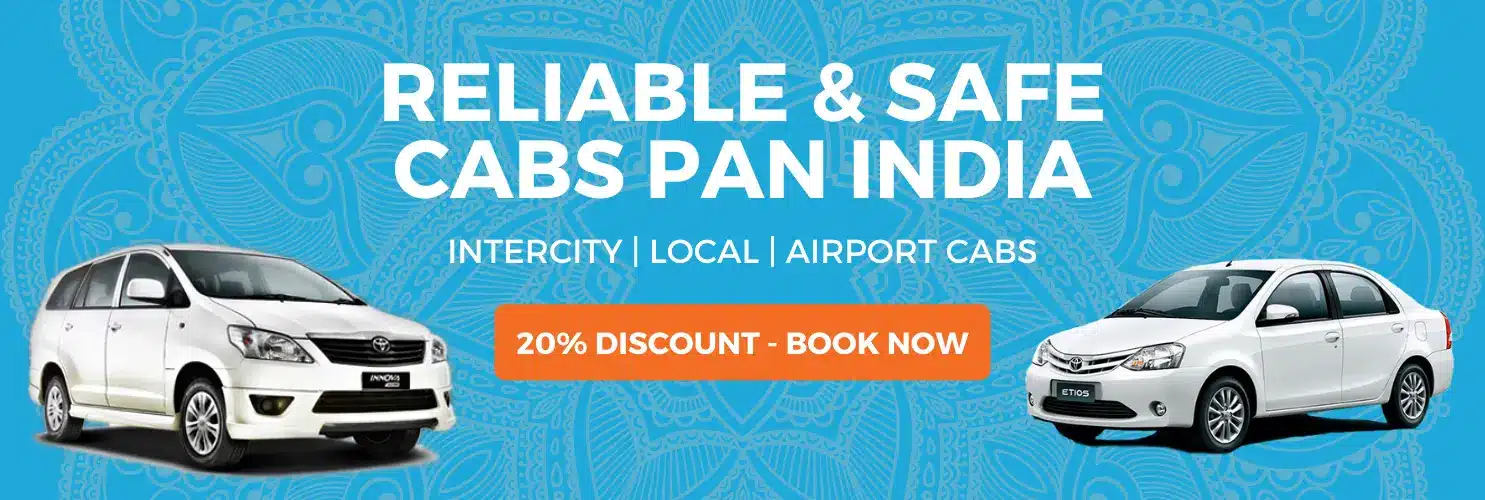
4. Govardhan Puja in Madhya Pradesh
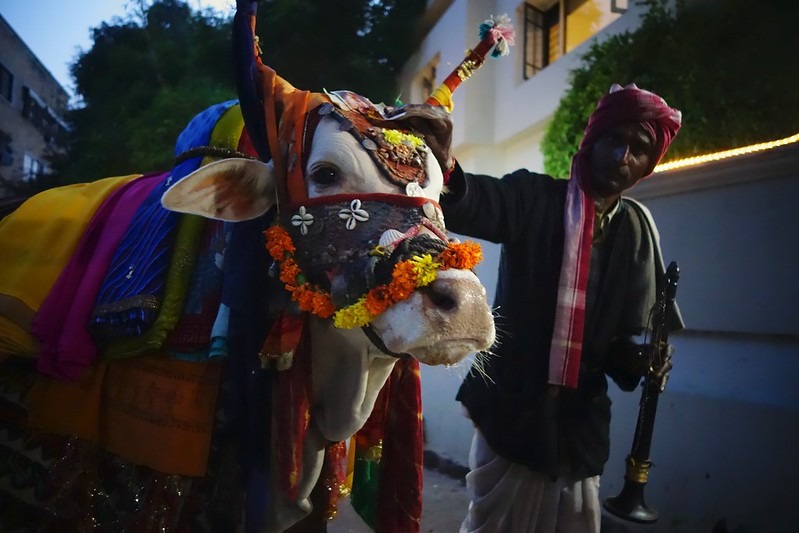
The Govardhan festival is held in Bidawad village, Ujjain district, on the day of Enadakshi, a day after Diwali. Villagers adorn their calves with flowers, before laying down on the ground and allowing the cows to stomp on them.
This ceremony occurs after a five-day fast. The entire village gathers to witness this spectacle, and it is believed that this practice will compel the Gods to answer their pleas.
[Also Read: Best Places to Visit in Madhya Pradesh]
5. Pathar Ka Mela in Himachal Pradesh
A stone-pelting ceremony called “Pathar Ka Mela” is held in Dhami, Himachal Pradesh, as a devotional celebration, and getting struck during the festivities is considered lucky. Every year after Diwali, two groups of locals meet to fling stones at one another, and the blood extracted from those injured is used to apply tilak to the idol of Goddess Kali at a nearby temple.
It was widely believed that human sacrifice was offered to the Goddess Kali at Dhami. However, a queen of the local princely state was offended by the ritual and abolished it. Stone pelting was established at the time as an alternative to human sacrifice and has been practised ever since.
6. Marriage of crops in Chhattisgarh
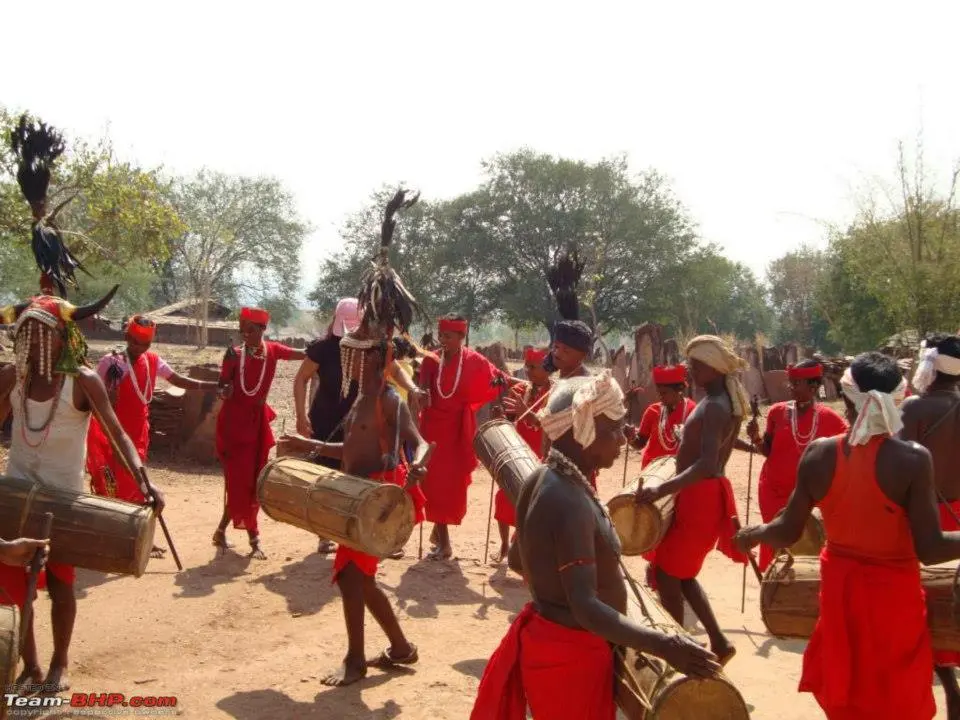
The tribal communities of Chhattisgarh’s Bastar region celebrate ‘Diwali’ as “Diyari” with unique Diwali rituals. The festival begins with a ceremonial marriage of crops in fields with an idol of Lord Narayana. It is followed by the practice of stockpiling food grain. On the first day of the festival, livestock owners in the tribal village of Bastar are honoured with alcohol. During the three-day Diwali festival, the cattle are decorated with flowers, drums are banged, and the crop is worshipped as an image of Goddess Lakshmi.
The Sindhi community also celebrates Diwali as “Diyari” but differently from the tribal communities of Chhattisgarh. They worship Goddess Lakshmi, and during the unique Diwali rituals, they use raw milk to cleanse silver and gold coins. After the puja, they grab the coins and softly tap them on their teeth while singing “Lakshmi aayi, danat vaai” (When Lakshmi arrives, poverty departs).
[Also Read: Offbeat getaways in India: Chhattisgarh]
7. Summoning forefathers in Odisha
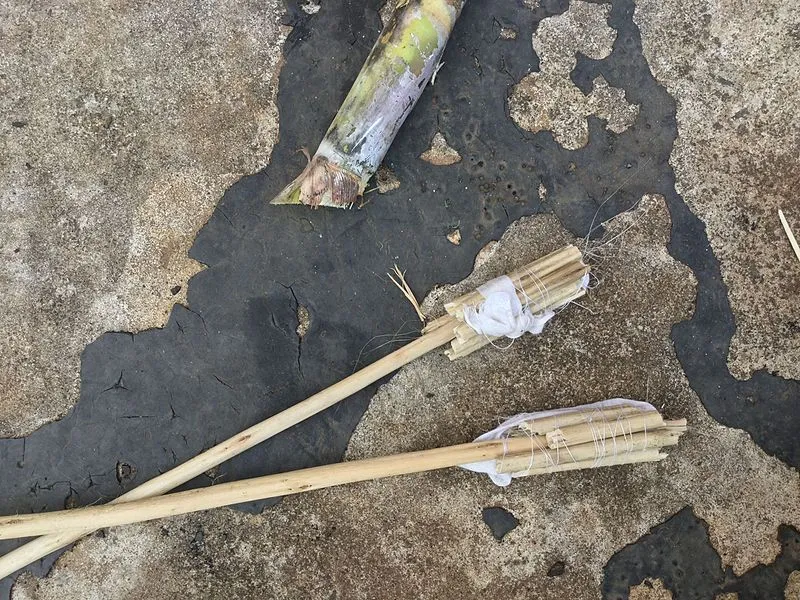
On the festival of Diwali, people in Odisha celebrate Kauriya Kathi, a ceremony in which they honour their ancestors. In the ceremony, they burn jute stems to produce fire as a signal to call the ancestors. They seek the blessings of their ancestors, who are said to be alive in heaven after their mortal bodies died on Earth.
[Also Read: Puri – The Land of Lord Jagannath]
8. Lighting lamps for Lord Yama in Maharashtra
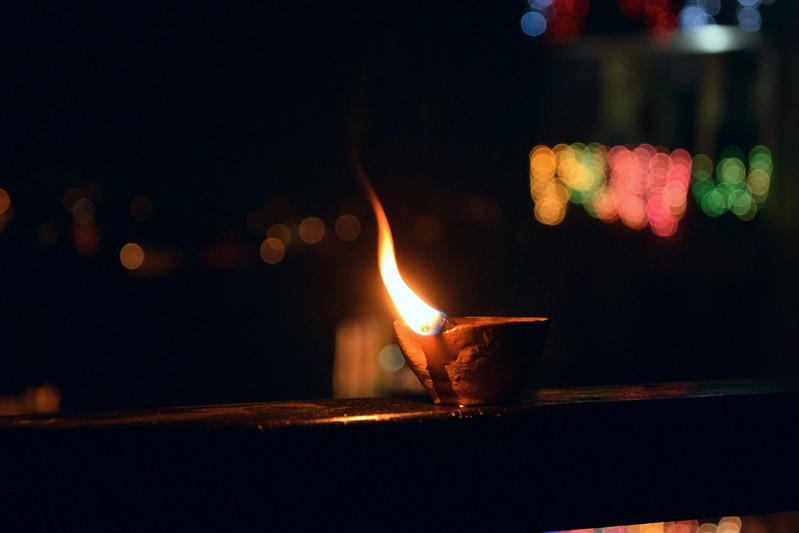
Diwali’s Dhanteras festival, known as Dhanatrayodashi in Marathi, is celebrated unlike any other part of India. On this day, Maharashtrian women light diyas in the name of each male member of the family to wish them a long and prosperous life. The ceremony, known in the state as Yamandeepdaan , involves the burning of specially kneaded flour diyas in honour of Lord Yama, the Hindu god of death.
An intriguing folklore is associated with this occasion which claims that a young prince was fated to die on the fourth day of his marriage. But on that particular day, his wife kept him awake by lighting diyas at the door. As fate would have it, the deity of death, ‘Yama,’ disguised as a serpent, attempted to enter the Prince’s chamber but was thwarted by compassion for the young wife who had lit the diyas to pray to him. This day is hence known as Yamandeepdaan, and a diya is kept blazing all night in Yama’s honour.
Thakar is one of the scheduled tribes that live in Maharashtra’s forest areas. They celebrate Diwali by creating lamps from the dried pieces of a fruit called chibra and using cow-dung to set the lamps. They worship the grain kept in a cane basket as the image of Goddess Lakshmi. On this occasion, they perform a folk dance in sync with the dhol beats.
9. Burning Narkasur’s effigy in Goa
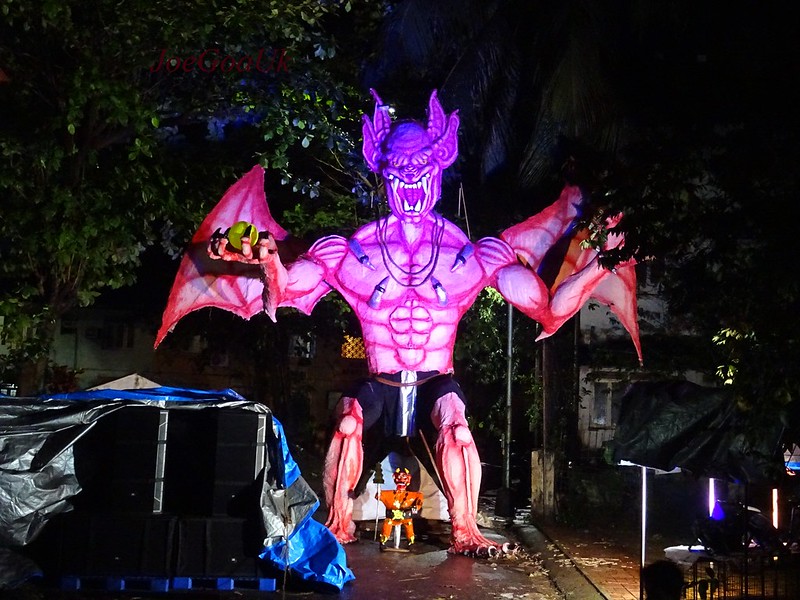
Goa celebrates the ‘festival of lights‘ in an extremely unique manner. In Goa, Diwali is also known as Narkasur Chaturdashi. Narkasur was the king of Goa, according to mythology. He was pompous, wicked, and possessed supernatural abilities. Narkasur was slayed by Lord Krishna early in the morning, just before dawn.
Locals construct Narkasur effigies out of discarded paper, grass, and other materials, which are then loaded with firecrackers and paraded around the streets of Goa. The effigy is then burned down by men on the eve of Diwali. This signifies the beginning of the celebration of light as well as the end of evil and darkness.
If you plan to attend the vibrant celebrations of Narkasur Chathurdashi here, book a convenient car rental in Goa with a local driver and get ready to be mesmerised by the intriguing and chivalrous tales of Lord Krishna.
[Also Read: Goa – The Complete Travel Guide]
10. Offering food around paddy fields in Karnataka
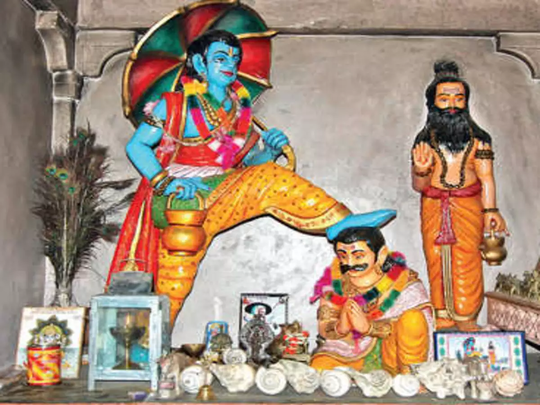
Image Credits: Vijaya Karnataka
People take an oil bath on the first day of Diwali in Karnataka. After destroying Narakasura, Lord Krishna is believed to have taken an oil bath to wash the bloodstains from his body. People smear their bodies with coconut oil to free themselves of sin.
Diwali is also a day of devotion for King Bali in coastal Karnataka, and the rite is called Balipadyami. Farmers rejoice and offer food around their paddy fields as part of the custom.
There’s also a myth that ‘gambling’ should be played on Balipadyami. Shiva and Parvathi are said to have played the dice game on this day. Shiva was defeated by Parvathi. Kumaraswami then won a dice game with Parvathi. Then Lord Ganesh defeated Lord Kumaraswami in a game. Since then, it is customary for the family to be involved in gambling on this day.
11. Bengal – A night with Kali Puja
In Bengal, Diwali uniquely intertwines with Kali Puja. Celebrated predominantly at night, households and temples come alive, worshipping the fierce Goddess Kali. Adorned with hibiscus flowers and offered delicacies like sweets, lentils, rice, and fish, the reverence for Ma Kali is palpable.
Kolkata’s iconic temples, Dakshineshwar and Kalighat, become focal points of devotion during this festival. The previous night, known as Bhoot Chaturdashi, sees homes illuminated with 14 diyas to ward off evil spirits.
Beyond just Kolkata, places like Barasat transform Kali Puja into a grand spectacle, reminiscent of Durga Puja. Themed pandals and fairs bustle with activity, while figures of demons Dakini and Yogini guard the entrances, symbolizing Ma Kali’s cosmic aides.
In Bengal, Diwali transcends beyond mere festivities, offering a spiritual voyage into the heart of Bengali traditions.
Witness these unique Diwali rituals in India by booking a car rental to take you to all these places with a local driver.
Last Updated on December 17, 2024 by Shabari Shankar
